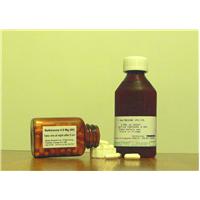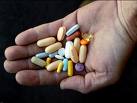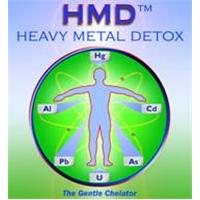Tag Archives: Drugs
Are you a shopaholic? Scientists prove it’s an illness!
People who shop excessively show signs of addiction, according to researchers at the University of Bergen.

The researchers, at the Faculty of Psychology, have developed a new and unique method to measure shopping addiction: the Bergen Shopping Addiction Scale (BSAS) – based on coreaddiction elements recognized as diagnostic criteria for other addictions, according to a report published in the journal Frontiers in Psychology.
Lead author Cecilie Schou Andreassen, Doctor of Psychology and Clinical Psychologist Specialist describes shopaholism as being “overly concerned about shopping, driven by an uncontrollable shopping motivation, and to investing so much time and effort into shopping that it impairs other important life areas.”
The Bergen study confirms that excessive shoppers display similar symptoms to those in drug addiction, alcoholism and other substance addictions. People with problematic shopping behavior experience craving, withdrawal, loss of control and tolerance. The research also provides evidence that younger females are most likely to shop excessively.Shopping addiction typically starts in late adolescence and emerging adulthood, and it appears to decrease with age.
Five key traits of a shopaholic
Dr. Andreassen’s team tested the BSAS and reviewed the roles of extroversion, neuroticism, conscientiousness, agreeableness and openness to experience in shopping addiction.
Extroverts tend to use shopping to uphold social status and sustain social attractiveness, such as by buying a new outfit for every occasion. The current study finds that extroverts need more stimulation than non-extroverts, and that they indulge in specific types of products as a way to express their individuality, enhance personal attractiveness, or as a way to belong to a certain privileged group, such as by purchasing high-end luxury goods.
People suffering from neuroticism, anxiety, depression and self-consciousness may shop to reduce negative emotional feelings. The Bergen researchers suggest that people scoring high on neuroticism engage excessively in different behaviors in order to escape from dysphoric feelings.
Conscientious and agreeable people may be less prone
People with low conscientiousness scores display low ability to be structured and responsible, leading to impulse buying. The current study adds that conscientious people have better planning ability, high self-control and the ability to resist temptations.
Agreeableness may deter shopping and other addictions, as addictive behavior can lead to conflict. However, agreeable people, being more trusting, may be more prone to exploitative marketing techniques.
Openness to experience may be negatively related, in that shopping addicts are less adventurous, less curious and put less emphasis on abstract thinking than their counterparts.
Intellectually curious people may avoid excessive shopping by having a better perception of reality that deters them from such activities. Some consider shopping too conventional an activity, at odds with central features of the openness/intellect trait, such as imagination, curiosity and unconventional values.
Low self-esteem and anxiety are factors
The current study shows that low self-esteem is common among shopping addicts, for whom irrational beliefs, such as “buying a product will make life better” and “shopping this item will enhance my self-image,” may trigger excessive shopping behavior.
Depression and psychological distress, such as anxiety, have been linked to shopping addiction, as people seek to escape or cope with negative feelings. The current study confirmed this, but at the same time, excessive shopping may cause anxiety and depression because of the consequences.
The Bergen Shopping Addiction Scale (BSAS)
The researchers set out to review the causes of shopping disorder and create an assessment tool that would take into consideration new awareness of the factors.
To construct the survey, seven addiction criteria were established, and four questions constructed for each, making a total of 28 items.
These were incorporated into a self-report questionnaire with additional questions about demographics, compulsive buying habits, personality, self-esteem, and symptoms of anxiety and depression.
The questions were distributed through the online edition of five nationwide newspapers in Norway in March, April and May 2014 to 23,537 participants, male and female, and covering a range of education levels and employment statuses.
Scoring “agree” or “completely agree” on at least four of the following seven questions may suggest addiction:
The items are scored on the following scale: (0) Completely disagree, (1) Disagree, (2) Neither disagree nor agree, (3) Agree and (4) Completely agree:
. You think about shopping/buying things all the time
. You shop/buy things in order to change your mood
. You shop/buy so much that it negatively affects your daily obligations (e.g., school and work)
. You feel you have to shop/buy more and more to obtain the same satisfaction as before
. You have decided to shop/buy less but have not been able to do so
. You feel bad if you, for some reason, are prevented from shopping/buying things
. You shop/buy so much that it has impaired your well-being
Should insurance companies ever be allowed to pay doctors to prescribe specific drugs?
In the UK direct advertising for prescription drugs (with the recent exception of the over-the-counter anti-obesity drug Alli and the statin Zocor) is banned.
This is because no-one is allowed to interfere or influence the doctor-patient relationship that allows the ethical treatment and prescribing of drugs that are optimal for treating the patient/illness. Pharmaceutical companies are also not allowed to send out promotional press releases about their drugs unless its about the outcome of a clinical trial for the same reason.
Of course there is the debacle over the UK government’s, National Institute for Clinical Excellence, which approves drugs for use within the NHS. It has been dubbed “a rationing body” by the media over decisions not to give drugs that could extend life at the earliest intervention in killer diseases such as Alzheimer’s and prostate cancer. The debate over this goes on.
But I learn of a new threat to our right to claim the best treatment when we need it. And it comes from the US where insurance companies are beginning to dictate what drugs should be given to patients by their consultants.
In particular, one insurance company is offering onocologists – a doctor who specialises in the diagnosis, evaluation and treatment of those with cancer – $350 a month for each patient that is put on their recommended regime, including drugs.
What this means is that the newer, more expensive and more effective drugs such as Cimetidine, Interleukin-2 and off-label (drugs not licensed for the treatment of cancer) will be off limits to patients whose doctors agree to this “backhander”.
According to the Life Extension organisation “these cookbook protocols” will result in cancer patients dying sooner and using up fewer resources in the process and doctors will be able to squeeze more patients in. If a doctor has 400 active patients and 100 are on the insurer’s “approved’ chemo drug programme that amounts to $35,000 a year and $420,000 a year.
Yet another reason, if one was needed, to fight for our National Health Service.
New safer drug for stroke preventation
London: A new drug costing only £2.50 a day may soon be available in Europe to prevent strokes in the over 50s.
Pradaxa, is said to be a safer than warfarin, the blood-thinner also used as a rat poison.
Warfarin has been prescribed to prevent strokes for more than 50 years but patients need to take regular blood tests in case they overdose. In addition some foods – spinach and broccoli stop it working properly and other such as cranberry make it more potent.Many patients refuse the drug because of the risks.
![Pradaxa [320x200].jpg](https://www.elixirnews.com/assets_c/2011/04/Pradaxa%20%5B320x200%5D-thumb-200x200-480.jpg) Pradaxa, on the other hand, taken twice daily, do not affect the diet as much and can be up to 39 per cent better at preventing strokes, the American College of Cardiology was told.
Pradaxa, on the other hand, taken twice daily, do not affect the diet as much and can be up to 39 per cent better at preventing strokes, the American College of Cardiology was told.
The drug is due to be approved next week by the European drugs regulator for use in atrial fibrillation next week.
The drug was trialled by more than 18,000 men and women suffering from atrial fibrillation, an extremely common heart rhythm disorder that raises the risk of stroke up to five-fold
Pradaxa, also known as dabigatran etexilate, could improve their health – as well as boost the quality of life for many of those who don’t want to take warfarin.
The drug is already licensed to prevent clots after hip, knee and other types of orthopaedic surgery.
Do we need yet another weight loss pill?
 Researchers have recently found a direct connection between the ‘fat’ gene and increased body weight. But how will this improve our health?
Researchers have recently found a direct connection between the ‘fat’ gene and increased body weight. But how will this improve our health?
The researchers, at Oxford University, have found a direct connection between the ‘fat’ gene (fat mass and obesity-associated gene) and increased weight. The research was published in Nature Genetics.
This gene was found to have multiple variants in 2007 – meaning that its variance in the population could provide an explanation for obesity – so scientists have been searching for its precise connection with obesity since then.
The leaders of the research project have said that the new findings could be used to develop an anti-obesity pill, but any pill resulting from these new findings wouldn’t be available for a long time yet.
The important question is – what would this pill be? Would we take it at birth to make sure we didn’t suffer from obesity? Would it turn into another vaccine we had to line up for at school?
Do we need another magic ‘lose all your ugly fat’ pill?
The diet industry is growing as quickly as obesity levels, which would indicate that something is not quite working.
In 2008, nearly a quarter of adults (over 16 years of age) in England were obese (had a BMI over 30). Just under a third of women, 32%, were overweight (a BMI of 25-30), and 42% of men were overweight.
Amongst children (2-15 years of age), one in six boys and one in seven girls in England were obese in 2008. The number of overweight children was also around one in seven.
The NHS predicts that the number of overweight and obese people is likely to increase.
The Foresight report, a scientific report used to guide government policy, has predicted that by 2025, nearly half of men and over a third of women will be obese.
Surely this tells us there should be a greater focus on changing the core reasons for obesity – the decrease in physical activity and increased intake of processed foods. We have to change the focus of our lives from convenience and speed – just look at how well convenience has treated the USA if you need any further evidence.
Most of us spend the majority of our day sitting in front of a computer, then fight to get a seat on the train so we can sit in front of the TV with our dinner. Hands up if you have two or more takeaway dinners a week?
Everything is geared towards us having to expend less and less energy, which is very bad news for our weight and health.
The reason for obesity is clearly much more than a greater susceptibility to the smell of food.
Sorry, we cannot blame our genes for this one.
US health watchdog refuses to OK new diet pill
![Lorcaserin [320x200].jpg](https://www.elixirnews.com/assets_c/2010/10/Lorcaserin [320x200]-thumb-320x194-343.jpg) The US’s Food & Drug Administration has refused permission for the manufacturers of Lorcaserin, a new diet pill, to put it on the market.
The US’s Food & Drug Administration has refused permission for the manufacturers of Lorcaserin, a new diet pill, to put it on the market.
The FDA told Arena Pharmaceuticals this was because of concerns about its marginal effectiveness and about cancers that occurred at higher-than-usual rates during clinical trials with rats. The FDA’s decision comes just two weeks after the makers of the prescription diet-pill Meridia was banned in the US and Canadian markets at the request of the FDA.
Lorcaserin was developed by Arena Pharmaceuticals, the San Diego drug company in partnership with Eisai Co.
Among the FDA’s concerns were weight-loss results that failed to rise to the FDA’s standards for approval, and an increase in cancerous breast and brain tumors in rats that were given a dose of the drug that is higher than that proposed for humans.
A clinical trial of Lorcaserin published in the New England Journal of Medicine found that two-thirds of patients lost at least 5% of their body weight, while a third lost at least 10% of body weight, with an average loss of 17 to 18 pounds.
MS sufferer campaigns to increase awareness of addiction drug


MS sufferer Linda Elsegood (pictured right) could not see or hear properly and had to use a wheelchair before she discovered Low Dose Naltrexone (LDN). Now she has launched her own campaign to increase awareness of the possible use of the drug in MS treatment.
Linda was so crippled by the disease that she was barely able to attend her daughters wedding. Then Lindas life was transformed when she discovered LDN via the internet.
The MS was causing me excruciating pain. It started with a tingling on my tongue, then I just couldnt get out of bed and was sleeping for 20 hours a day, says Linda, from Norfolk.
I was finally diagnosed with Relapsing and Remitting MS. In October 2003, my neurologist told me there was nothing more that could be done for me.
From that moment Lindas deterioration was rapid until she started taking LDN in December 2003 and noticed improvements after three weeks. This continued for two years and then Lindas symptoms stabilised.
LDN uses approximately 1% of the Naltrexone dose approved by the Food and Drug Administration (FDA) for treating alcoholism and drug addiction.
I still have MS but life is good, says Linda. I can set targets and achieve them and look forward to the future.
The other prescribed treatments had horrendous side effects and cannabis was not an option for me.
After my success with LDN, I wanted everyone to know about it. I formed the LDN Research Trust in May 2004 and now spend all my time helping others while trying to raise funds for clinical trials.
Naltrexone is a generic drug that is out of patent, so very cheap to produce. The downside of that is that drug companies will not fund trials as there is no money to be made.
Id like the Government to fund clinical trials as I believe this could change the lives of thousands of people in the UK who suffer not only from MS but also Crohns, cancer and other diseases.
The LDN Research Trust website www.ldnresearchtrust.org offers information for anyone considering the treatment.
The first International LDN Awareness Week takes place from October 19-25, 2009.
Linda is pictured, right, with her grandson Leo.

Over 60s warned to check drug cocktail with pharmacist – new survey

Older people may be taking a potentially dangerous cocktail of drugs, according to new research from the Royal Pharmaceutical Society of Great Britain.
The Society said is urging older people to review the medication they are taking. Millions of over 65s in Britain, said the Society, are taking a cocktail of medicines without fully understanding what they are, or the side effects they may be suffering from.
The research shows how nearly half (43%) of over 65s in Britain are currently taking over five medicines at any one time. However, one in five admit to not always taking the medicine as prescribed, and a staggering six out of 10 (61%) over 65s believe they either definitely or possibly have had a side effect from a medicine yet one in five said that they did not get it checked out.
Other findings of the research revealed that almost one in 10 (9%) admit to not fully understanding what their medications do or how they treat their condition, and one in seven (14%) say they sometimes forget to take a pill at the recommended time.
Older people take more medicines than any other age group and account for about 50% of the NHS Drug Bill (Over £4Billion), mainly via repeat prescriptions (80%). Statistics show that the over 65s are three times more likely to be admitted to hospital because of adverse drug reaction (such as falls, confusion, delirium, gastrointestinal bleeds and other reactions) with up to 17% of hospital admission being due to these conditions and its estimated that 80% of hospital admissions due to adverse reaction to medicines are predictable and preventable.
Watch the Society video on this subject:
Depression increases heart attack risk in women

New York: Women who suffer from clinical depression are more than twice as likely to die of a heart attack
A US study of more than 63,000 women suggested this could be because unhappy women are more likely to smoke, have high blood pressure and eat unhealthily.
The more depressed a woman is, the higher her risk of death from a sudden heart attack or chronic heart disease.
The most severe type of depression, clinical depression, is associated with a more than 100 per cent increased risk of a sudden cardiac death. The risk was even higher among women on antidepressant drugs – but this may be because these medicines are prescribed to the most depressed women.
Study leader Dr William Whang, of Columbia University, said: “It’s important for women with depression to be aware of the possible association with heart disease, and work with their healthcare providers to manage their risk for coronary heart disease.
“A significant part of the heightened risk for cardiac events seems to be explained by the fact that coronary heart disease risk factors such as high blood pressure, diabetes, elevated cholesterol, and smoking were more common among women with more severe depressive symptoms.’
In the Journal of the American College of Cardiology, Dr Sanjiv Narayan commented: “These data indicate the link between depression and serious heart rhythm problems may be more complex than previously thought. It raises the question of whether this association may have something to do with the antidepressant drugs used to treat depression.’
New cannabis-like drugs are better pain killers
London: A new type of drug could alleviate pain in a similar way to cannabis without affecting the brain, according to a new study published in the journal Pain.
The research demonstrates for the first time that cannabinoid receptors called CB2, which can be activated by cannabis use, are present in human sensory nerves in the peripheral nervous system, but are not present in a normal human brain.
Drugs which activate the CB2 receptors are able to block pain by stopping pain signals being transmitted in human sensory nerves, according to the study, led by researchers from Imperial College London.
Previous studies have mainly focused on the other receptor activated by cannabis use, known as CB1, which was believed to be the primary receptor involved in pain relief. However, as CB1 receptors are found in the brain, taking drugs which activate these receptors can lead to side-effects, such as drowsiness, dependence and psychosis, and also
recreational abuse.
The new research indicates that drugs targeting CB2 receptors offer a new way of treating pain in clinical conditions where there are currently few effective or safe treatments, such as chronic pain caused by osteoarthritis and pain from nerve damage. It could also provide an alternative treatment for acute pain, such as that experienced following surgical operations.
The new study showed that CB2 receptors work to block pain with a mechanism similar to the one which opiate receptors use when activated by the powerful painkilling drug morphine. They hope that drugs which target CB2 might provide an alternative to morphine, which can have serious side effects such as dependency, nausea and vomiting.
Praveen Anand, Professor of Clinical Neurology and Principal Investigator of the study from the Division of Neurosciences and Mental Health at Imperial College London, said: “Although cannabis is probably best known as an illegal recreational drug, people have used it for medicinal purposes for centuries. Queen Victoria used it in tea to help with her period pains, and people with a variety of conditions say that it helps alleviate their symptoms.
“Our new study is very promising because it suggests that we could alleviate pain by targeting the cannabinoid receptor CB2 without causing the kinds of side-effects we associate with people using cannabis itself.”
The researchers reached their conclusions after studying human sensory nerve cells in culture with CB2 receptor compounds provided by GlaxoSmithKline, and also injured nerves from patients with chronic
pain.
The researchers are now planning to conduct clinical trials of drugs which target CB2 in patients with chronic pain at Imperial College Healthcare NHS Trust, which has integrated with Imperial College London to form the UK’s first Academic Health Science Centre.
Background information
1.”Cannabanoid receptor CB2 localisation and agonist-mediated
inhibition of capsaicin responses in human sensory neurons,” Pain, published in print 15 September 2008
Corresponding author: Praveen Anand, Imperial College London (for full list of authors please see paper)
You can download a copy of this paper using this link:
https://fileexchange.imperial.ac.uk/files/d99f49dd0d0/CB2%20Pain%20paper
.pdf
2. Imperial College London – rated the world’s fifth best
university in the 2007 Times Higher Education Supplement University Rankings – is a science-based institution with a reputation for excellence in teaching and research that attracts 12,000 students and 6,000 staff of the highest international quality. Innovative research at the College explores the interface between science, medicine, engineering and business, delivering practical solutions that improve quality of life and the environment – underpinned by a dynamic enterprise culture. Website: www.imperial.ac.uk
Boots opens UK’s first drive-through pharmacy

London: The UK’s first drive-through pharmacy has opened for business in the Essex town of Colchesher.
The pharmacy, operated by Boots, says it will fill prescriptions in two minutes while customers wait in their cars.
Boots says it is aiming the service, from a converted MacDonald’s fast-food outlet, at mothers and commuters.
The move is a copy of what happens in the US where drive-through pharmacies are common – there are about 3,000 there.
The drive-through section is attached to a conventional walk-in Boots store selling the usual range of toiletries, cosmetics and snacks.
The drive-through service provides prescription items only throughout the store’s opening hours, 8am-8pm Monday to Saturday. Between 8pm and midnight it also sells over-thecounter medicines.
UK pharmas call for debate on drug access
London: The pharmaceutical industry today called for a public debate on access to modern medicines, and how society determines the value of new treatments.
The Association of the British Pharmaceutical Industry (ABPI) is inviting NICE, patient groups, medical professionals, the NHS and leading healthcare charities to debate the issues amid continuing controversy on the availability and cost of innovative medicines to NHS patients.
“A frank, open and honest debate is clearly in the interests of patients,” said Chris Brinsmead, President of the Association of the British Pharmaceutical Industry (ABPI).
“We are calling for the patient groups, healthcare charities, doctors, Government, NICE and the NHS to join with the pharmaceutical industry to debate these crucial issues to hammer out a lasting solution. The time has come to discuss how we best resolve the issue, and where better than on a public platform?”
The pharmaceutical industry spends approximately £3.9billion a year in the UK researching and developing new medicines for patients. This investment has delivered over 90 per cent of the medicines available today and has led to new treatments for rheumatoid arthritis, cancer, heart disease and HIV to name but a few, Mr Brinsmead added.
He said: “The UK pharmaceutical industry along with other healthcare professionals and NICE is committed to developing innovative approaches to pricing, ensuring that patients receive the medicines that they need. Taking the recent example of the four kidney cancer medicines, all these medicines are widely available to patients throughout Europe where the prices are higher than in the UK.”
Mr Brinsmead said: “We are looking forward to hearing NICE’s response and welcome their contribution to what will be one of the most important debates in the history of modern healthcare.”
Image – Boy and Medicine: courtesy of MedicImage
New drug attacks Alzheimer’s
London: British scientists have trialed a new drug that stops the worst effects of Alzheimer’s Disease.
A daily capsule of Rember, is Isaid to be more than twice as effective as current treatments and can prevent the desease from progressing, in effect stablising it.
In trials patients who tried the drug had no further significant decline in their mental function over 19 months.
Rember attacks the plaque tangles that destroy nerve cells and memory allowing the brain to recover.
The bad news is the that drug will not be available for at least four years. There are also doubts as to whether it will be available on the UK’s National Health Service following the decision not to fund another drug, Aricept, which only costs £2.50 a day.
The one-a-day pill also has the potential to be used to prevent the disease progressing at even earlier stages ie when there are no symptoms.
The Rember trial was carried out by a team at the University of Aberdeen and the new research was presented at the International Conference on Alzheimers disease in Chicago, involved 321 people with mild and moderate Alzheimers disease in the UK and Singapore.
They were divided into four groups, three taking different doses of rember and a fourth group taking a placebo or dummy capsule.
After 50 weeks, those with both mild and moderate Alzheimers who were taking rember experienced 81 per cent less mental decline compared with those on the placebo.
Those taking rember did not experience any significant decline in their mental function over 19 months, while those on the placebo got worse.
The results suggest the drug is about two-and-a-half times more effective than existing drugs called cholinesterase inhibitors.
Images of the brain showed rember had its biggest effect in the parts linked to memory, where the density of tau tangles is greatest, with better blood flow to these areas.
The drug works by dissolving the tangle of tau fibres which releases waste products that kill nerve cells, and by preventing the fibres from becoming tangled.
Consultant psychiatrist Dr Donald Mowat, who monitored the progress of patients, said they were more confident, better able to cope with daily life and not experiencing the level of mental decline they had expected.
The trial was a Phase 2 study, which checks the safety and efficacy of the drug, but if a large-scale Phase 3 trial due next year repeats the findings, the drug could be available for prescribing by 2012. At the same time, the research team is investigating a way of diagnosing Alzheimers at its earliest stages when tau tangles are first being formed in the brain.
People may have these tangles in their 50s, long before symptoms develop, and the researchers hope the drug could be used as a preventive treatment.
Professor Wischik co-founded TauRx Therapeutics, which is developing the treatment.
Professor Stephen Logan, professor of neuroscience and TauRx board member, said: This is a fantastic breakthrough and very exciting.
Patients have been doing well for 18 or 19 months. They are continuing to take the drug and will probably do so until there is no benefit or they start to decline.
Blood pressure drugs help cut Alzheimer’s risk
Chicago: Drugs used to cut blood pressure has been shown to improve the risk of Alzheimer’s.
According to a new US study of angiotensin receptor blockers, or ARBs, which are normally prescribed as a second choice treatment to patients unable to tolerate ACE inhibitors, another class of blood pressure drug, the results are dramatic.
Both drugs work by allowing the blood vessels to the vessels to relax and widen so more blood can flow through them, which cuts blood pressure.
Alzheimer’s is associated with high blood pressure, damaged arteries and amaloid plaques, a type of protein which attaches itself to the neurotransmitters in the brain.
In the new study, an Alzheimer’s conference in Chicago was told, six million patients treated for high blood pressure between 2001 and 2006 were examined by scientists.
Those taking ARBs were 35 to 40 per cent less likely to develop Alzheimer’s or other forms of dementia than patients on other medications.
Patients already suffering from Alzheimer’s when they started taking ARBs had a 45 per cent reduced chance of developing delirium, being admitted to a nursing home, or dying prematurely during the period of the study.
Those who had experienced strokes before or during the course of their illness appeared to benefit most from the drugs.
Study leader Professor Benjamin Wolozin, of Boston university medical school, said: ‘For those who already have dementia, use of ARBs might delay deterioration of brain function and help keep patients out of nursing homes. The study is particularly interesting because we compared the effects of ARBs to other medications used for treating blood pressure or cardiovascular disease.’
Alzheimer’s Disease is affecting more and more older adults as people live longer.
Drug-related deaths increase in UK

London: Prescription drugs kill nearly 20 people a week in the UK. And deaths linked to reactions to medication given by the country’s National Health Service have nearly doubled in the last five years to more than 1,000.
In total, around 20,000 patients suffered a range of side effects from prescription drugs. But experts believe the numbers reported by medical professionals may be far worse. This is because the reporting system, of flagging up suspisions in voluntary.
The latest statistics show the number of patient deaths linked to prescription medicines rose from 648 in 2001, to 1,013 last year – the first time it has exceeded 1,000.
The total number of adverse drug reactions reported by doctors fluctuated between 21,460 and 17,500 over the same five-year period. But the number of deaths rose consistently each year.
Do incontinence drugs accelerate mental decline?

New York: Elderly people treated with drugs for dementia and bladder incontinence at the same time declined faster than those treated only for demenia, according to new research from the Wake Forest University School of Medicine in North Carolina.
Lead researcher Kaycee M Sink MD, MAS, Assistant Professor of Internal Medicine at the school commented: “It is likely that the oppositional effects of the drugs contributed to the accelerated decline.
“Over a year’s time, the decline we observed would represent a resident going from requiring only limited assistance in an activity to being completely dependent or from requiring only supervision to requiring extensive assistance in an activity.”
The combination of drugs affected older adults who started out with higher levels of function in activities of daily living such as dressing, personal hygiene, toileting, transferring, bed mobility, eating, and being able to get around the unit. The results which reveal a 50% greater decline are pubished in the Journal of the American Geriatrics Society.
The study looked at 395 nursing home residents in Indiana who were taking medications for both conditions and 3,141 who were taking only a dementia medication.
Residents included in the analysis were aged 65 years and older and had had at least two consecutive prescriptions for cholinesterase inhibitors, for example, donepezil (Aricept), galantamine (Razadyne), rivastigmine (Exelon), and tacrine (Cognex). These drugs are designed to increase levels of acetylcholine, a chemical that enhances communication between nerve cells in the brain.
About 10% of the residents were also taking either oxybutynin or tolterodine, the two most commonly prescribed drugs for urinary incontinence. These drugs are known as anticholinergic agents and are designed to block acetylcholine, a substance required by the brain for optimum function.
“The two drugs are pharmacological opposites, which led us to hypothesise that the simultaneous treatment of dementia and incontinence could lead to reduced effectiveness of one or both drugs,” said Dr. Sink.
She said the finding of the more rapid decline among residents taking both types of drugs represents a significant public health problem because an estimated 33% of people with dementia also take a drug for incontinence.
“Until now, the clinical dilemma for managing incontinence and dementia has been largely theoretical. This research suggests it may lead to worse outcomes, which is the opposite intention of therapy for dementia.”
The researchers also measured whether the residents taking both drugs experienced a decline in mental function as well, but there was no difference between the two groups, possibly because the test was not sensitive enough. Dr. Sink said that similar research should be extended to community-dwelling older adults with dementia and that more sensitive measures for cognition should be used. Previous studies have shown that the bladder medications are associated with cognitive decline and that people with dementia are especially sensitive to this side effect.
“The results suggest that clinicians should continue to try nondrug management strategies for incontinence before beginning therapy with one of these common drugs,” said Dr. Sink.
She noted that the study was conducted in 2003 and 2004, before newer incontinence medications were introduced that may have less effect on acetylcholine in the brain.
New generation diet pill which mimics hormone ready for human trials


London: A new generation of hormone diet drugs which could be as effective as weight-loss surgery could soon be on the market after the announcement that it was ready for human trials.
Scientists believe the drug, which creates a false feeling that a person is full, could offer a breakthrough in the treatment of obesity, which is predicted to reach epidemic levels in the coming decades.
One in four Britons is now classed as obese, one in three 10-year-olds is either overweight or obese and more than one million obesity drugs are prescribed every year.Experts estimate that by 2050 half of all adults will be classed as clinically obese.
The drug, which has been developed by Imperial College London, offers an alternative to gastroplasty, or stomach stapling, which uses surgery to reduce the size of the stomach.
It has been developed by Steve Bloom, a medical professor at the university, who has produced a synthetic version of a hormone called oxyntomodulin, which is known to help obese patients reduce their food intake.

Anti-obesity drugs fail to deliver long-term weightloss

London: Patients taking anti-obesity drugs will only see modest weight loss and many will remain significantly obese or overweight, according to a study published on www.bmj.com today.
In a new study from Canada, which looked at the long-term effectiveness of anti-obesity medications, it was found that three drugs recommended for long-term use – orlistat, sibutramine and rimonabant, reduced weight by less than 5kg (11 pounds). This equated to a loss of less than 5% of total body weight.
Whereas guidelines from the UK’s National Institute for Clinical Excellence recommend stopping the use of anti-obesity drugs if 5% of total body weight is not lost after three months.
While making changes to lifestyle and diet are recommended as the initial treatment for obesity, the use of anti-obesity drugs is common. Its estimated that in 2005 global sales of anti-obesity drugs reached $1.2billion. Current UK guidelines recommend using drug therapy in addition to making lifestyle changes if a patient has a body mass index of greater than 30.
The Canadian researchers reviewed the evidence from thirty placebo-controlled trials where adults took anti-obesity drugs for a year or longer. The mean weight of the volunteers in all of the trials was 100kg (15.7 stone). The mean body mass index levels were 35 36.
Professor Raj Padwal and colleagues found orlistat reduced weight by 2.9kg, sibutramine by 4.2kg and rimonabant by 4.7kg. They also found that patients taking the weight loss pills were significantly more likely to achieve 5 10% weight loss, compared to those who took the placebo.
The health benefits associated with taking the drugs varied. For example, orlistat reduced the incidence of diabetes in one trial and all three drugs lowered patients levels of certain types of cholesterol. Adverse effects were recorded with all three drugs, in particular, rimonabant increased the risk of mood disorders such as depression or anxiety. The authors noted that no trials examined rates of death and disease as a result of taking anti-obesity pills. They recommend that trials looking at this should be carried out in the future.
The authors also noted that there were high drop-out levels in all the trials. On average 30 40% of patients failed to complete the trial. They say this suggests that a failure to properly adhere to the treatment could be a major factor limiting the effectiveness of anti-obesity drug therapy.
In an accompanying editorial, Professor Gareth Williams warns of the potential damage to society if anti-obesity drugs are licensed to be sold without prescription. This already happens in the United States, and as Glaxo Smith Kline (GSK) has applied to sell orlistat over the counter throughout Europe, it could happen here.
He warns: Selling anti-obesity drugs over the counter will perpetuate the myth that obesity can be fixed simply by popping a pill and could further undermine the efforts to promote healthy living, which is the only long term escape from obesity.
Probiotics boost bowel health, says new Netherlands report
London: A new pilot study from The Netherlands suggests that friendly bacteria, which have known benefits for intestinal health, may boost the number of bowel movements and relieve constipation.
The study investigated the potential of a probiotic mixture to alleviate the symptoms associated with childhood constipation, a condition that can affect up to 30 per cent of children in the Western world according to researchers.
The pilot reported that the frequency of bowel movements doubled following probiotic supplementation, increasing from two per week to 4.2 after two weeks, to 3.8 after four weeks. In addition a decrease in abdominal pain reported by the children showed a drop from 45 per cent at the start of the study to only 20 per cent after four weeks of supplementation.
Researchers from the Academic Medical Centre in Amsterdam report state that previous studies with single strains showed conflicting results, and that a mixture of Lactobacillus and Bifidobacteria strains may hold the key. “Given their safety profile, probiotics could be an attractive compound to manipulate gastrointestinal motility in constipated children,” wrote lead author Noor Bekkali.
Available from The Nutri Centre, the UKs leading resource for nutritional supplements, complementary medicine and advice, Biocare Bio-Acidophilus contains 8 billion viable cells in an exclusive LAB4 complex, consisting of two strains of Lactobacillus Acidophilus and two strains of Bifidobacterium Bifidum. These strains have been specially selected for their robustness and ability to survive in the human digestive environment. The fructooligosaccharide (FOS) base is a highly effective growth medium for these probiotic bacteria.
Bio-Acidophilus costs £17.95 for 60 veg capsules. Adults should take 2 capsules per day. The dosage for children is lower at half a capsule per day from 12 months onwards, and 1 capsule from 2 years onwards. Children between 6 and 12 months can take half a teaspoon (2g) per day of Biocares strawberry or banana flavoured Acidophilus Powder (60g for £13.75), which contains the same beneficial strains of bacteria in a base of naturally flavoured FOS. Bifidobacterium Infantis (60g for £24.60) is suitable for children from birth onwards, as it only contains the one strain of bacteria, also in a base of FOS. The powder can mixed withwater, milk, juice or unheated food. Follow these dosage guidelines or as professionally directed.
All the products are available from The Nutri Centre. Call 020 7436 5122 to order or to speak to a qualified nutritionist, or order online at www.nutricentre.com
Jab to halt Alzheimer’s on way
Zurich: An injection which halts the brain disease Alzheimer’s is being trialled by Swedish patients and could be available within a six years.
The drug works by breaking up amyloid playques – a sticky protein that attaches itself to the brain cells responsible for communication, causing memory loss and other distressing symptoms.
The drug has been developed by Zurich-based biotechnology company Cytos, which has already sold the patent for CAD106 to pharma giant Novartis.
Scientists believe that CAD106 will prevent the elderly reaching the final stages of the illness, in which patients become totally dependent.
Alzheimer’s is on the increase in developed countries as people live longer and the exact cause is unknown. It is estimated there are 25 million sufferers worldwide. Current drug therapies can delay symptoms but the new vaccine would hold the disease at bay, although it would not be able to restore damaged brain tissue.
Early tests on mice have shown that the vaccine is efficient at breaking up amyloid plaque.When the jab was given to mice suffering from a disease similar to Alzheimer’s, 80 per cent of the patches of amyloid protein were broken up.
The vaccine is now being tried out on 60 elderly Swedish patients in the early and middle stages of Alzheimer’s. Half of the men and women are being given the vaccine while half are being given dummy jabs.
Although the year-long trial is designed to show that the treatment is safe, the researchers will also look at its effect on the patients’ symptoms.
In the UK, the Alzheimer’s Society is challenging the National Institute for Health and Clinical Excellence – the medicines watchdog – over its ruling that three drugs, Aricept, Exelon and Reminyl will be available only to NHS patients with moderate symptoms, while a new drug called Ebixa is banned for all. The AS is taking NICE to the High Court on Monday to challenge the decision not to give the drugs which cost just £2.50 a day.
Once a year 15 minute therapy cuts risk of broken bones in post-menopausal women, new study finds
San Francisco: A study published today for a treatment that is given just once a year has been shown to significantly decrease the risk of broken hips and other broken bones, caused by post-menopausal osteoporosis.1
The study published in the New England Journal of Medicine on 3rd May found that the active treatment zoledronic acid 5mg (Aclasta) cut the risk of broken hips by 41% and the risks of breaks to the spine (vertebrae) by 70% compared to patients on no treatment (placebo). Broken bones at other parts of the body, such as wrists, were cut by 25%.
Zoledronic acid 5mg was given as a short infusion (at least 15 minutes) once a year in the three year study. All patients received daily calcium and vitamin D supplements which are essential for good bone health.
The authors state: A once-yearly infusion of zoledronic acid (5mg) during a 3-year period was associated with a significant and sustained decrease in the risk of vertebral, hip, and other fractures. An annual infusion of zoledronic acid (5 mg) may provide a promising approach to reducing fracture risk. 1
The three-year study was carried out in 7,765 post-menopausal women, aged 65 to 89, from 27 countries including the UK. Approximately half received zoledronic acid 5mg and half placebo.
British women who took part in the study were treated at centres in Aberdeen, Sheffield, Liverpool and Glasgow.
The pharma, Novartis, is currently seeking a licence for zoledronic acid 5mg (Aclasta®) for post menopausal osteoporosis in the UK.
Over the three years, 88 (2.5%) of the women in the placebo group suffered a hip fracture compared to 52 (1.4%) of the women in the zoledronic acid 5mg group.
The researchers, led by Professor Dennis Black, of the University of California, San Francisco, said During a 3-year period, an annual infusion of zoledronic acid 5mg significantly reduced the risk of fracture at all key osteoporotic fracture sites, including the two primary end points, vertebral and hip fractures. 1
A regimen of infusions once a year appears to ensure that patients will have a full treatment effect for at least 12 months.1
Despite the availability of effective treatments for osteoporosis, poor adherence to drug regimens reduces the benefits and presents a major challenge for health professionals. 4
Figures from the National Osteoporosis Society say that over 60,000 hip and 120,000 vertebral fractures take place each year in the UK. 22
The UK’s National Osteoporosis Society says that around one in five (18%) people die within three months of having a broken hip accounting for around 14,000 deaths per year in this country alone. A woman with a vertebral fracture has a four times higher risk of death than a woman with no vertebral fractures. 2
One of the authors of the study, Professor Richard Eastell, Professor of Bone Metabolism at Sheffield Universitys School of Medicine and Biomedical Sciences, said the findings provided potential good news for thousands of women suffering from osteoporosis.
Professor Eastell pointed out that The ability to only have the treatment once a year does mean that it simplifies the whole regimen. You dont have to remember every day to take this medication. There is no doubt that Aclasta reduces vertebral fracture, hip fracture and other breaks.
Professor David Reid, Professor of Rheumatology at the University of Aberdeen, who led one of the UK centres involved in the study said that the hip fracture data was particularly relevant.
Preventing hip fractures remains the holy grail of treating osteoporosis, as we know that six months after a hip fracture, nearly a fifth of patients will be dead. Reducing hip fractures by 41% is therefore highly clinically significant.
Study Details
In this double-blind, placebo-controlled trial, 3889 patients were randomly assigned to receive a single 15-minute 5mg infusion of zoledronic acid and 3876 were assigned to receive a placebo infusion at baseline, at 12 months, and at 24 months; the patients were followed until 36 months. 1 All patients in the study also received daily calcium and vitamin D supplementation.
Primary end points were new vertebral fractures (in patients not taking concomitant osteoporosis medications) and hip fracture (in all patients). Secondary end points included bone mineral density, bone turnover markers, and safety outcomes.
Treatment with zoledronic acid 5mg reduced the risk of vertebral fracture by 70% over a 3-year period, as compared with placebo (3.3% in the zoledronic-acid 5mg group vs. 10.9% in the placebo group; relative risk, 0.30; 95% confidence interval [CI], 0.24 to 0.38) and reduced the risk of hip fracture by 41% (1.4% in the zoledronic-acid 5mg group vs. 2.5% in the placebo group; hazard ratio, 0.59; 95% CI, 0.42 to 0.83).
Over the three years, 88 (2.5%) of the women in the placebo group suffered a hip fracture compared to 52 (1.45%) of the women in the zoledronic acid 5mg group.
The figures for vertebral fracture were 310 women (10.9%) in the placebo group versus 92 (3.3%) on zoledronic acid 5mg.
Secondary fracture endpoints of nonvertebral, and clinical (symptomatic) vertebral fractures were reduced by 25% and 77%, respectively (P<0.001 for all comparisons). Zoledronic acid 5mg was also associated with a significant improvement in bone mineral density and bone metabolism markers.
The majority of adverse events seen with the active treatment, including flu-like symptoms, were transient and resolved shortly after the treatment. Adverse events were similar in the two study groups. However, serious atrial fibrillation was seen more frequently in the zoledronic-acid 5mg group (1.3% vs. 0.5% patients, P<0.001). The observed association might be due to chance but is being further studied in other trials of zoledronic acid 5mg.
Risks of Osteoporosis
Osteoporosis is a long-term disease with consequences such as broken bones that only become apparent long after the condition starts. 2
Osteoporosis, which literally means porous bone, is a disease in which the density and quality of bone are reduced. As the bones become more porous and fragile, the risk of fracture is greatly increased. 2
One in two women will suffer a fracture after the age of 50. 2
The lifetime risk of fracture in women at age 50 years is greater than the risk of breast cancer or cardiovascular disease. 2
On the basis of current trends, hip fracture rates in the UK may increase from approximately 46,000 in 1985 to 117,000 in 2016. 2
The most common osteoporotic fracture sites are: lower vertebral fracture (120,000), hip (60,000) and wrist (50,000). 2
Compliance Issues
The total number of women prescribed medication for osteoporosis in the UK is approximately 480,000. 2
One year after an osteoporotic fracture, the majority of patients are not prescribed any pharmaceutical agents for the prevention of a further fracture. 2
A retrospective analysis of a large US population of bisphosphonate users (>35,000 women) who were followed for 2 years demonstrated a significant association with adherence to bisphosphonate therapy and risk of osteoporotic fractures3.
About Novartis
Novartis AG (NYSE: NVS) is a world leader in offering medicines to protect health, cure disease and improve well-being. Our goal is to discover, develop and successfully market innovative products to treat patients, ease suffering and enhance the quality of life. We are strengthening our medicine-based portfolio, which is focused on strategic growth platforms in innovation-driven pharmaceuticals, high-quality and low-cost generics, human vaccines and leading self-medication OTC brands. Novartis is the only company with leadership positions in these areas. In 2006, the Groups businesses achieved net sales of USD 37.0 billion and net income of USD 7.2 billion. Approximately USD 5.4 billion was invested in R&D. Headquartered in Basel, Switzerland, Novartis Group companies employ approximately 101,000 associates and operate in over 140 countries around the world. For more information, please visit www.novartis.com
References
1. Black et al. Once-yearly Zoledronic Acid 5mg for Treatment of Postmenopausal Osteoporosis. New England Journal of Medicine 2007 356;18; 1809-1822
2. National Osteoporosis Society. Osteoporosis facts and figures (version 1.1). www.nos.org.uk (Accessed April 2007)
3. Siris et al. Adherence to bisphosphonate therapy and fracture rates in osteoporosis women: relationship to vertebral and nonvertebral fractures from 2 US claims databases. Mayo Clin Proc 2006; 81 (8): 1013 1022.
4. Compston. Treatments for Osteoporosis- Looking beyond the HORIZON. New England Journal of Medicine 2007 356; 18; 1878-1880
Sylvester Stallone arrest promotes interest in growth hormone
Sydney: Cosmetic interest in the controversial anti-ageing growth hormone has swelled by 20 per cent since Rocky star Sylvester Stallone was allegedly caught with the chemical at Sydney airport.
The Cosmetic Physicians Society of Australasia says its members have fielded an unprecedented number of inquiries about human growth hormone, particularly from men in their 50s and 60s, in the past month.
The specialists say demand was fuelled by publicity arising from Stallone’s February visit to promote his latest film, Rocky Balboa, when he was charged with trying to import 48 vials of the hormone a so-called “anti-ageing” elixir into Australia.
The hormone is produced naturally by the pituitary gland to promote healthy growth, but many claim it enhances movement, sight, hair and general wellbeing when taken in its synthetic form.
It is also claimed to turn fat into muscle and is most well-known for its popularity among body-builders and Chinese swimmers, but scientific studies have yet to firmly establish any of these benefits.
Australian cosmetic surgeons who gathered in Melbourne for their national conference this week say there has been a 15 to 20 per cent increase in inquiries about hormone products in the past month.
Society president Glenn Murray said more people had been taking up the products, primarily to “boost up” levels of the hormone that had dropped off with age.
Both men and women, typically aged in their 50s and 60s, were signing up for the hormone despite there being few long-term studies showing benefits or side-effects, Dr Murray said.
“They’re feeling tired and like they’re looking their age and just want to slow things down,” he said.
“When they’re older and wanting to get a great last 20 years then they’re willing to try it and take some risks for the chance of a better quality of life.”
Dr Michael Zacharia, president of the Australasian Academy of Anti-Ageing Medicine, said a regular, low dose could “extend youthfulness”.
“It’s not that you’re going to live longer as such but you can prevent a lot of diseases, like cardiovascular disease, from coming along,” Dr Zacharia said.
“An 80-year-old who’s on an anti-ageing regime will look better, feel better and be just as active as he was when he was 60.”
But this is disputed by most in the academic scientific field who say there is a lack of hard science to prove the $500-a-month treatment actually works.
Australian laws prohibit the import of natural and manufactured growth hormones without a permit.
Stallone is required to enter a plea on his case’s next scheduled court date, April 24, but he is excused from attending court if legally represented.
Drugs , Nutraceuticals & Cosmeceuticals – Nargis Ara
Nargis Ara MRPharmS is a UK registered Consultant Medical Information Pharmacist who regularly contributes to expert panels for healthcare publications and radio advising on the safe and rational use of medicines including pharmaceuticals, cosmeceuticals and naturaceuticals. She is an experienced pharmacist and research scientist in the field of liposomes which are now widely used in the cosmetic industry.
Read more about Nargis Ara at www.nargisara.com Email your concerns/questions about drugs/pharmaceuticals etc at Nargis Ara
Alzheimer’s charity to fight UK government drug ban in court
London: Alzheimer’s suffers in the UK are being denied drugs that can slow the progress of this terrible disease because the Government drug rationing body says that they are not cost effective at £2.50 a day per patient.
As a result, many patients and their families are left struggling to cope with the dreadful erosion of memory and everyday skills caused by the disease. The Alzheimer’s Society has now mounted a legal challenge to try to reverse the decision.
Around 750,000 Britons are affected by dementia – more than half of them with Alzheimer’s – at an estimated cost to the nation of £17billion a year. And as the ageing population grows the number suffering from the disease is forecast to grow to a million.
The charity The Alzheimer’s Society is mounting a legal challenge to the decision by the National Institute for Health & Clinical Excellence (NICE) in the High Court. Two of the drug companies who make the drugs, Eisai and Pfizer are leading a separate legal action on the ban.
Britons with dementia already have less access to diagnosis and treatment that those in other EU countries and the Government has no remedy for the increase in sufferers of the disease. diagnostic services and treatment options than patients in other EU countries.
Three drugs, Aricept, Exelon and Reminyl, which could slow the disease’s progress, are no longer available for patients with ‘mild’ Alzheimer’s in England and Wales although they are licensed in Scotland.
These drugs help boost low levels of a chemical within the brain which helps nerve cells to communicate, temporarily improving or stabilising symptoms in about half of patients who try them.
Only patients with ‘moderate’ symptoms are eligible for these medicines, while a new drug called Ebixa which improves severe behavioural problems can be used only as part of a clinical trial.
The scale of the problem is revealed in a Dementia UK report prepared by the London School of Economics and King’s College, London. It says the cost of £17billion each year includes NHS and social services, lost income and taxes from carers, and the estimated contribution from unpaid carers.
Delaying the onset of dementia by five years would halve the number of related deaths, saving nearly 30,000 lives annually.
Are toxic metals making you ill?
Alarmingly, we unwittingly ingest far more toxic metals daily than what our bodys can eliminate. In a recent study 278 heavy metals and other toxins were found in the blood of newborn babies, an indication of just how many there may be in a fully grown adults body.
These metals accumulate in our tissues and organs, building up to dangerous levels that kick open the doors of chronic, degenerative diseases such as cancer, MS and Chronic Fatigue Syndrome. The increased prevalence of heavy metal toxins in the human body is almost certainly a direct result of todays modern society.
Astonishingly, it is no longer a case of whether an individual has been exposed to toxins but rather the level of exposure to heavy metals that the body has experienced. Dangerous toxins are present in the air we breathe, the water we drink and even the soil in which our food is grown. Most people are completely unaware of the common sources of heavy metals and more worryingly are oblivious to the real physiological and psychological dangers that these toxins posses.
Aluminum, Arsenic, Beryllium, Cadmium, Lead, Mercury, Nickel, Thallium and Uranium are some of the most commonly known heavy metals and there are a number of ways in which these can be absorbed into the body. Each toxin can attack specific organs and often the dangers of these heavy metals can go unnoticed until problems develop later in life. Ranging from headaches, hypertension and fatigue to more serious health and neuro-psychiatric disturbances for example, depression or even infertility, the effects of these are varied and pose serious risks to our health.
Undoubtedly one of the most common and most dangerous heavy metals released into our environment is mercury, this can be found in fish products (especially tuna, sea bass and Halibut), amalgam tooth fillings, certain vaccinations, fluorescent lights, manufacturing plants, hospitals, and clinical thermometers.
Mercury vapour is easily absorbed into the body, and once taken into the bloodstream can affect the kidneys and liver but have a natural affinity for the nervous system causing problems such as Multiple Sclerosis, Parkinsons, Altzheimers. Symptoms of Mercury poisoning include
– Impairment of peripheral version
– Pins and Needles feelings
– Impairment of speech, hearing and walking
– Muscle Weakness
– Skin Rashes
– Mood Swings
– Memory loss
During pregnancy, women who also eat just a single highly contaminated portion of fish can expose their child to mercury toxins, which travel through the placenta to potentially harm the developing nervous system and the brain. Also, vaccinations can contain a mercury preservative called Thimerosol which are commonly given to young babies, even though this product has now been banned in a lot of vaccinations.
Extensive research has shown that many vegetables can also contain potentially high levels of lead, due to the absorption of petrochemicals when grown near roads. Lead competes with calcium in the body and can lead to serious neuropsychiatric symptoms such as insomnia, temper tantrums, lowered IQ and difficulty with reading and writing.
Disturbingly, the growth stimulator which is occasionally fed to chickens can contain high levels of arsenic. Subsequently, many families are as risk of toxic poisoning simply from consuming a traditional family favourite.
Says Dr George Georgiou With todays modern society taking its toll on our bodies, there seems to be a very real need to increase awareness surrounding the issues of heavy metals. It cannot be a mere coincidence that diseases such as cancer and other serious ailments are on the rise. It is imperative that ignorance be alleviated and people become aware of the dangers. Simple proactive steps such as eating organic food and taking a heavy metal chelator supplement can ensure that levels of exposure are minimized.
Research has shown that the problems surrounding heavy metals will continue to grow especially with the development of technology in todays society. The importance is to raise awareness and it is paramount to highlight the dangers of the hidden killers present in our food.
For more information on the issue surrounding Heavy Metals please log on to www.detoxmetals.com






